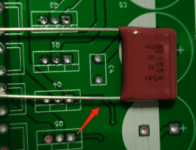Attached my tentative BOM
Missing a few components, it's always a pain to find using Mouser search engine, these are specifically (they were not present in your BOM file from what I could see):
- Terminal block : probably a JST XHP 2pin connector, not needed if I'm pulling power from J115
- Diode D6
- IDC Header straight 34 pins : granted, this one is a classic and I can probably find it if I search a little bit harder

- Connector for Arduino. In similar cases I use straight single row female header sockets (15 pins each), as I have a bunch, but it would be nice if there was a ready to use DIP connector for an Arduino. Not sure how PCBWay can handle two connector sockets with just one stencil (A1).
Can you please check if everything is accurate, and provide suggestions if any
With regards to the list, could anyone from the list above interested ping me.
Originally I was planning to build 10 units for my usage (and some friends), with the number above this will increase to 30 units. I'm assuming a $40 cost per unit (rough estimation, I don't have yet PCBWay quote back), so that's a hefty sum. I do hope units will be functional...
As such I would rather build 10 units, test them to ensure PCBWay did manufacture them correctly, and if works we can proceed with a higher number of units.
[EDIT] Found the Sparkfun stackable header for the Arduino
Just missing the diode, and for the life of me I can't find the 2x17 pins straight header, especially since I don't know the step (I'm assuming it's a 2mm based on the gerber), can you please confirm ?
Thanks

